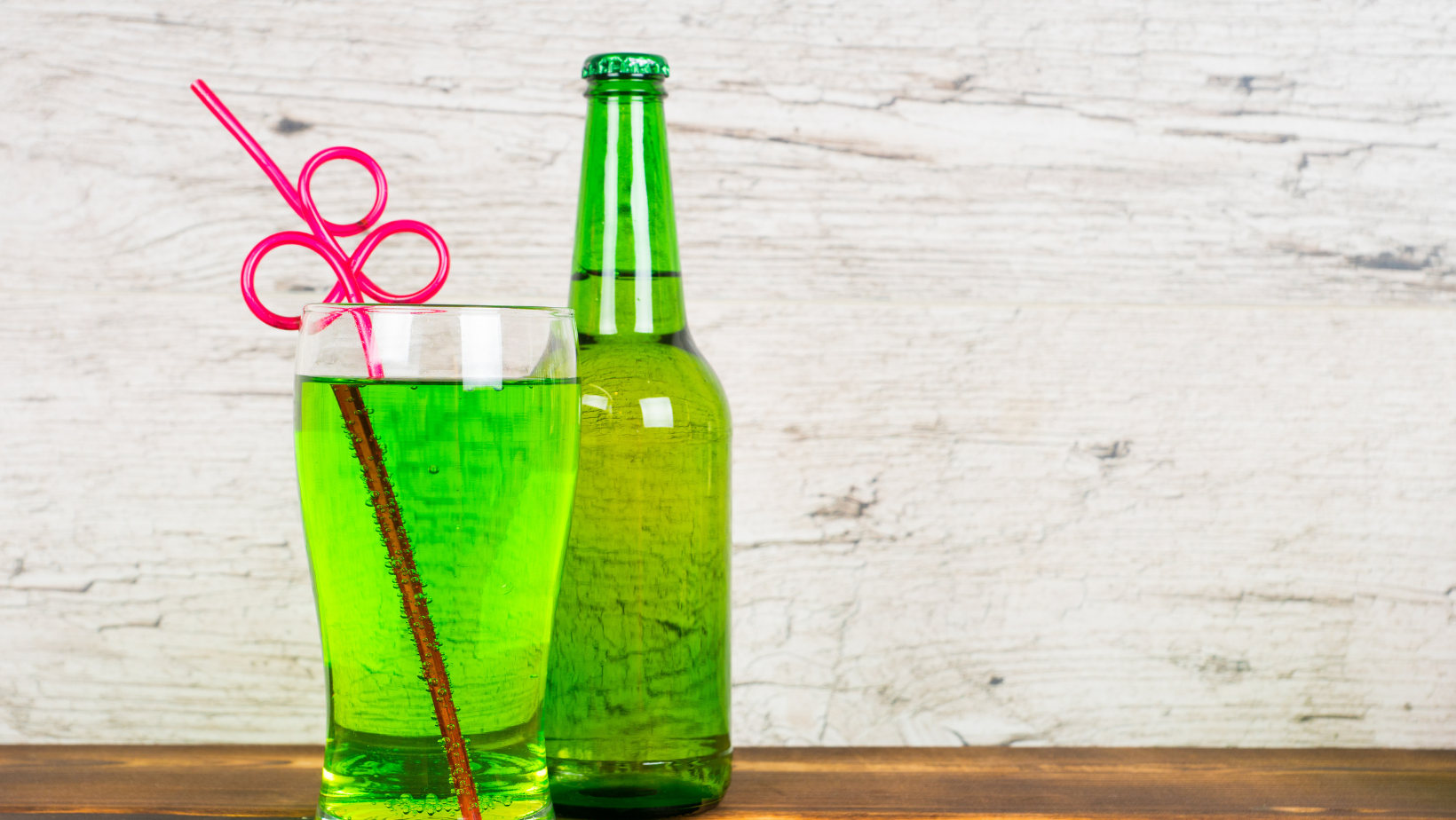
Coca-Cola’s The Vault was a citric soda whose lemony zing with exorbitant caffeine content amassed a cult following in no time after its launch.
The soft drink due to its high levels of caffeine was marketed as a hybrid of aerated beverage and an energy drink. Thus, bringing the best of both worlds.
The sudden halt of soft drink’s marketing and production left the enthusiasts and critics wondering, alike, why did Vault soda disappear?
The Vault was immensely popular amongst its loyalists so much so that the fans’ community would try to figure out “will Vault soda ever come back?”, “if they still make Vault soda?” and “where to buy it”.
The fandom of the drink even led to a petition on change.org by a young adult named Toby Timmerman, who also founded an online movement ‘The Vault Crusade’ to mobilize like-minded soda lovers to bring back the old beverage.
The petition received a massive response with 5,700+ signatures to relaunch the soda.

How did Vault Soda Gain Popularity?
Upon its launch, the soda was heavily marketed as the drink which was synonymous with ‘getting things done since it was introduced as a direct competitor of PepsiCo’s Mountain Dew, which also positioned itself as a go-to carbonated drink for the go-getters and adventurers.
To tackle this challenge head-on, the following hard-hitting slogans were used for Vault’s advertising “The Taste. The Quench. The Kick.”, “Get it done, and then some”, “Chug & charge”, “Vault, get to it” etc.
The most memorable slogan out of all was the one that took place in the form of a TV commercial during the 2006 Superbowl XL between the Seattle Seahawks & Pittsburgh Steelers. It took the nation by storm when the iconic line first appeared “Drinks like a soda, kicks like an energy drink”.
Initially tested and distributed in mid-western and southern states it was suddenly popular and the demand for the drink surged everywhere.
RELATED: Why Pokemon Duel Shut Down
History of Vault and Citrus Soda Segment
When the Cola Wars began in 1975, the competition for the top position was not only restricted to the flagship products. The carbonated drink industry’s giants vied for the throne in various sub-segments as well.
And the citrus soda category was dominated by PepsiCo’s Mountain Dew ever since the brand acquired the beverage in 1964. Coca-Cola’s desperate attempt to lead the space resulted in the company producing multiple neon-colored, citrus flavored, and caffeine-charged drinks such as Mello Yello, Surge, etc.
The failure to cause a severe dent in Mountain Dew’s market share by the previous Coca-Cola products paved the way for Vault Soda.
And for a short amount of time, Vault did not disappoint as demand for the product steadily kept growing with the support of Coca-Cola’s enormous marketing efforts.
The sub-brand’s strategy was to weave itself perfectly with American pop culture and it was evident that no stone was unturned with respect to product visibility.
Retail store employees were given freebies in the form of t-shirts and other apparel, considerably younger customers between the ages of 15 – 35 were the prime focus as they tend to stay more up to date in terms of new trends.
Where did Coca-Cola Go Wrong With Its Marketing?
After the failure of Surge soda, another neon-tinted mountain dew competitor. Coke had to focus on the right demographic, and it appeared as if the cola company was learning from its previous mistakes.
The Surge soda in its development stage was code-named MDK or Mountain Dew Killer. General consensus and the re-entry of Surge proved that the product was well-liked, and it probably could have beaten the Mountain Dew in the citrus race in the long run.
But the product fell prey to its own marketing strategy, as Surge was heavily investing in marketing to target the pre-teens.
The idea looked good on paper as they wanted to catch their audience young and turn them into Surge loyalists as they grew up instead of opting for Pepsi’s product.
The ugly problem reared its head in the form of a lack of purchasing power of the target audience. As teens and young adults typically have a disposable income via an allowance or a part-time job, the pre-teens simply don’t have money to spend at their discretion.
What helped Surge capture the national zeitgeist ended up causing its collapse. They amped up the madness in their commercials to an extreme that was unprecedented, and it severely affected how parents looked at the soft drink.
The parents in turn brought home what they wanted instead of what kids demanded, which subsequently led to the target customers seldom consuming the beverage and hardly developing a knack for it.
Why did Vault Disappear?
This time around with Vault, Coca-Cola had to be super cautious in how they were positioning themselves in the market.
Coke played it safe and covered a larger demographic of people under 35 and it had no issues admitting it was a knock-off of Mountain Dew as they would name-call their competitor’s product in their advertising, and they executed this idea successfully.
The real issue was that they had not done nationwide testing of the product. They mostly did the groundwork in the mid-western and southern states namely Georgia, Kansas, Virginia, West Virginia, North Carolina, South Carolina, Texas, Tennessee, Alabama, and Michigan.
After the initial buzz died down and the subsequent marketing efforts failed to prevent the sales from taking a nosedive. It became apparent that it was merely popular in a small number of southern states.
It’s ironic to see how the Vault rival Mountain Dew in its early days was publicized to appeal to the country folks, yet it went on to become not just a national but a global phenomenon, and Vault, on the other hand, launched four decades after Dew’s launch and died down as a country favorite.
To make things worse, ‘Fanta Pineapple’ and ‘Vault Zero’ came under a lawsuit for containing ingredients that can produce benzene, a carcinogenic.
A cancer-causing agent in a soda rubbed people off the wrong way and even though Coca-Cola reformulated the soft drink and sent the new ones back to the store shelves it was apparent that irreparable damage was caused to the brand.
The Vault could not take down its PepsiCo rival because Mountain Dew was a behemoth with an 80 percent market share and it did so with a head start of 4 decades and an uncompromising taste that appealed to a broader audience.
Vault with its strong taste backed by its high caffeine content was never able to give its consumers a better or even a similar feel to that of the Dew.
The strong caffeine earned its cult following and critics alike as everyone was not on board with the idea of 70.5 mg per 12 fluid ounces (a typical 355ml can) compared to Mountain Dew’s 54 mg and Mello Yello’s 51 mg for the same quantity.
In turn, it was competing with the fan-favorite Mello Yello, a Coca-Cola product itself as the flavor profile of both the soft drinks was similar which put the company in a tough spot.
Coca-Cola around the same time went on to acquire a major stake in a well-known energy drink, Monster. It was an expensive affair for the organization.
Since Vault was marketed as a hybrid between a soda & an energy drink and Monster being an actual energy drink, keeping vault alive would have meant compromising on the sales of this new entrant.
Thus, it only made sense to continue with either of the two products. Naturally, the cola company decided to pull the plug on Vault and go forward with Monster as it was a more popular and profitable venture.
To add to that Vault had a notorious track record of competing with the company’s own products, which made Vault’s chances of survival difficult.
ALSO READ: What happened to Adobe Flash
Will Vault Come Back?
The answer to this question lies in the current market status of Vault’s predecessor Surge. Surge’s brand image was such that parents across the US simply hated it.
So much so that it was banned from many schools and college campuses despite it having less caffeine and sugar in comparison to Mountain Dew which comfortably enjoyed its staying power in the vending machines and the cafeterias of educational institutions.
The Mountain Dew killer met its own demise in 2002 due to the sheer brand image which Coke worked so hard to build.
Coca-Cola went ahead and tried to keep Surge soda alive for as long as they could by rebranding the soft drink as a friendlier, less extreme, less in-your-face drink. Regardless of all the herculean efforts, Coca-Cola put in, retailers started pulling the drink off their shelves.
At the turn of the century, the die-hard fans of Surge were able to come together via the internet and lobbied Coke to re-launch Surge.
But Coca-Cola had other plans and went on to make the hybrid beverage Vault, which Surge purists vehemently disapproved of.
After the downfall of Vault in 2011, the Surge enthusiasts again reached out to Coke and then the century-old beverage maker agreed to the fans’ request and Surge was back in popular demand but in a low-key manner.
In 2011, Coke was quick to replace Vault in Coca-Cola Freestyle machines with Mello Yello, which was indeed a popular option back then with a higher brand value. Thus, making a statement that Mello Yello was the alternative to Vault going forward.
After 10 years Coke seems to have stopped Mello Yello’s expansion (in 2021), which at least on paper makes the chances of Vault’s resurgence slightly bright.
But there is another humongous hurdle in Vault’s way, which is Sprite. Even though Sprite was never a direct competitor of Mountain Dew its image and branding symbolize rejuvenation and refreshment. Thus, making it a 7up challenger.
As of now, if one thinks of a citrus soda that is globally renowned and backed by Coca-Cola it must be Sprite. Looking at the situation at hand, it seems highly unlikely that Vault is set to make a comeback anytime soon.















